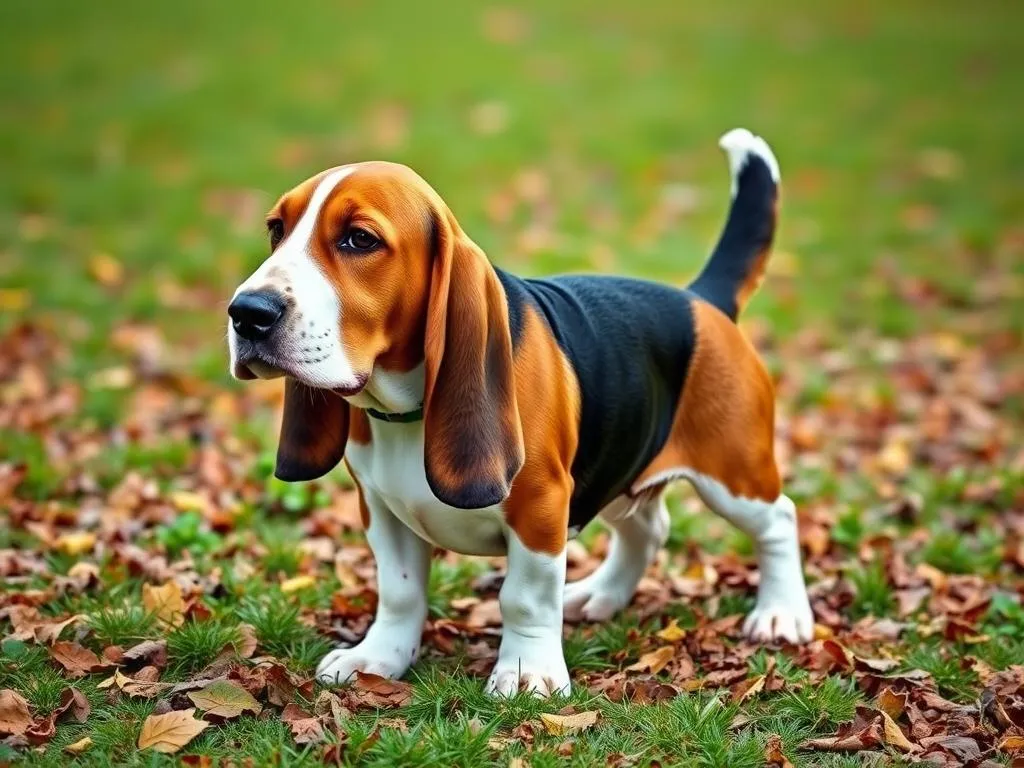
Introduction
Basset Hounds are known for their distinctive appearance, characterized by long ears, droopy eyes, and a unique, elongated body. Their friendly and easygoing nature makes them lovable companions, but these traits can also create challenges when it comes to potty training a Basset Hound. Understanding their common behavioral traits and physical characteristics is crucial for effective training.
Potty training is essential not only for the comfort of your home but also for the happiness and well-being of your Basset Hound. A successfully potty-trained dog is less likely to experience anxiety or behavioral issues, fostering a happier relationship between pet and owner. This article will guide you through the process of potty training your Basset Hound, helping you set realistic expectations and providing you with a comprehensive strategy to ensure success.
Understanding Your Basset Hound
Basset Hound Temperament
Basset Hounds are known for their gentle, laid-back personalities. They tend to be affectionate and loyal, but they can also be stubborn at times. This mix of traits can influence the potty training process. Understanding that Basset Hounds may not always respond to commands as quickly as other breeds is crucial. Patience and a consistent approach will go a long way in helping them learn.
Physical Characteristics
The unique anatomy of Basset Hounds presents both advantages and challenges in potty training. Their short legs and long bodies mean they may have a harder time maneuvering to get outside quickly, which could lead to accidents. Recognizing this physical limitation can help you tailor your training approach to accommodate their needs.
Preparing for Potty Training
Essential Supplies
Before starting the potty training process, gather the essential supplies to make the experience smoother for both you and your Basset Hound:
- Potty Training Pads: These are useful for indoor training and can help prevent accidents while your dog learns.
- Crate: A crate can provide a safe space for your Basset Hound, as dogs naturally avoid soiling their sleeping area.
- Leash and Collar: A sturdy leash and collar will help you control your dog during bathroom breaks.
Creating a Potty Training Schedule
Consistency is key in potty training. Establish a schedule that includes regular bathroom breaks, typically every 2-3 hours, especially after meals and playtime. This routine helps your Basset Hound learn when to expect bathroom breaks, reinforcing the habit.
Establishing a Designated Potty Area
Choosing a specific area for your Basset Hound to relieve themselves can encourage them to associate that space with going to the bathroom. Look for a quiet, familiar spot in your yard or a designated area in your home. This familiarity will help your dog feel comfortable and confident when it’s time to go.
Potty Training Techniques
Positive Reinforcement
One of the most effective methods for potty training a Basset Hound is positive reinforcement. This involves rewarding your dog for doing the right thing, such as going to the bathroom outside. Rewards can include treats, praise, or playtime. Find out what motivates your Basset Hound the most and use it to encourage good behavior.
Crate Training
Crate training is a valuable tool in the potty training process. Dogs instinctively avoid soiling their sleeping areas, so a crate can help your Basset Hound learn to hold it until they can go outside. Here’s how to crate train effectively:
- Introduce the Crate: Make the crate a comfortable and inviting space with bedding and toys. Allow your dog to explore it freely.
- Feeding in the Crate: Start feeding your dog meals inside the crate to create positive associations.
- Gradual Increases in Time: Begin by closing the door for short periods and gradually increase the time as your Basset Hound becomes more comfortable.
Using Commands and Cues
Introducing specific commands or cues can help your dog understand when it’s time to go potty. Choose a simple command like “go potty” and use it consistently every time you take your Basset Hound outside. Over time, they will learn to associate the command with the action.
The Potty Training Process
Step-by-Step Guide
Here’s a step-by-step guide to help you through the potty training process:
- Initial Training Phase: Start by taking your Basset Hound outside frequently, especially after meals, playtime, or waking up. Use your chosen command and wait for them to go.
- Gradually Increasing Freedom: Once your dog consistently goes outside, you can gradually increase their freedom within the house. Supervise them closely during this transition.
- Monitoring Signs of Needing to Go: Learn to recognize signs that your Basset Hound needs to go, such as sniffing, circling, or whining. Respond promptly to these signals.
Common Mistakes to Avoid
Avoiding common mistakes can significantly improve your potty training success:
- Misreading the Dog’s Signals: Pay close attention to your Basset Hound’s behavior. Ignoring their cues can lead to accidents and confusion.
- Inconsistency in Training Approach: Stick to your established schedule and commands. Inconsistency can create frustration for both you and your dog.
- Punishments and Their Impact: Avoid punishing your Basset Hound for accidents. This can lead to anxiety and worsen the issue. Instead, focus on positive reinforcement.
Troubleshooting Potty Training Issues
Regression in Training
It’s normal for dogs to experience setbacks in their training. Regression can occur due to changes in routine, stress, or health issues. If your Basset Hound has accidents after becoming reliable, revisit your training methods and re-establish consistency.
Dealing with Accidents
Accidents will happen, especially during the early stages of potty training. When they do, it’s important to handle them properly:
- Avoid Punishment: Never scold your dog for accidents. This can lead to fear and confusion.
- Clean Thoroughly: Use enzymatic cleaners to remove odors that may encourage repeat offenses in the same spot.
When to Seek Professional Help
If you find that your Basset Hound is struggling despite your best efforts, it may be time to seek professional help. Signs that you may need assistance include persistent accidents, extreme anxiety, or aggression. Look for certified dog trainers or behaviorists in your area who specialize in potty training.
Maintaining Long-term Potty Training Success
Routine Establishment
Once your Basset Hound is fully potty trained, maintaining a consistent daily routine is crucial. This includes regular meal times, bathroom breaks, and playtime. As your dog matures, you may need to adapt the routine to meet their changing needs.
Continued Reinforcement
To ensure long-term success, continue to reinforce the behaviors you want to encourage. Incorporate rewards into your daily life to keep your Basset Hound motivated. Regular praise and treats for successful bathroom breaks will help solidify their training.
Socialization and Its Impact
Socializing your Basset Hound can also positively impact their potty training journey. Exposing them to different environments, people, and other dogs can help reduce anxiety and create a more confident, well-adjusted pet. A well-socialized dog is generally more adaptable, making them more responsive to training efforts.
Conclusion
Successfully potty training a Basset Hound requires understanding their unique temperament and physical characteristics, as well as a commitment to consistency and positive reinforcement. By following the strategies outlined in this guide, you can help your dog learn appropriate bathroom behaviors while fostering a strong bond between you and your furry friend.
Remember that patience is essential—each dog learns at their own pace. Celebrate the small victories along the way, and don’t hesitate to reach out for support from fellow dog owners or professionals if needed. Your commitment to this training journey will result in a happier, more manageable home for both you and your beloved Basset Hound.









